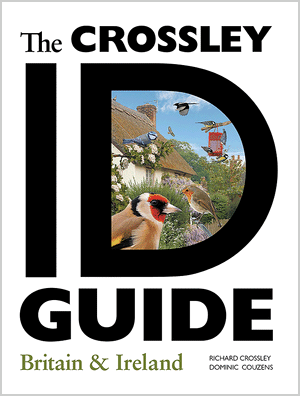The Crossley ID Guide: Britain & Ireland by Richard Crossley and Dominic Couzens arrived at my home on a rainy Colorado afternoon. The perfect setting to crack open a new book and write a review.
On first glance, the ID Guide follows Crossley’s other books. The Crossley plates are superb and really capture the multi-aspects of each bird. I loved the scenic backgrounds but did find the people on the Coot plate distracting (pg. 150) and almost comical. Most of the other plates with a human aspect like the Garden Warbler (pg. 248) didn’t create such distraction and seemed just part of the background. I do like the size of this guide, it’s smaller than a big Sibley but not pocket size. It’s a slender book with a size that allows the reader to fully appreciate the bird plates. The Goldfinch plate (pg. 284) is a work of art.
I could look at these plates over and over. Of course, that is the creators plan; to have us study birds over and over and really form a full picture of the bird so that it will be easier to ID in the field. I found the introduction interesting and the bird plate text almost like poetry: “Abundant, adaptable, domineering all-black ‘wide boy’ among birds, found in woods, farmland, villages, towns, cities, rubbish tips – indeed almost anywhere” (pg. 200). Crossley’s book describes the Carrion Crow as any true birder, with admiration. I like that he isn’t afraid to deviate from the traditional, short descriptions and instead uses more colorful imagery such as “Feeds on ground, can walk or move with sinister, 2-footed hops.” His descriptions of a bird I have never seen (the Carrion Crow) immediately entice me to visit and see this crow for myself. I fear that every plate and text will draw me in like this.
Thanks Richard Crossley for another great ID Guide and for encouraging me to go back to Britain, this time as a birder. I will certainly be pouring over these pages before I go.
This review copy was provided by Princeton University Press.
This review copy was provided by Princeton University Press.


No comments:
Post a Comment